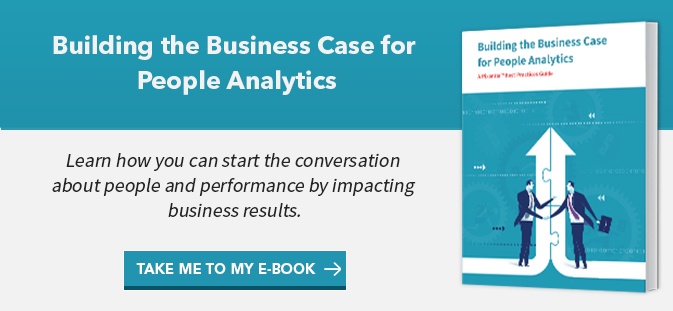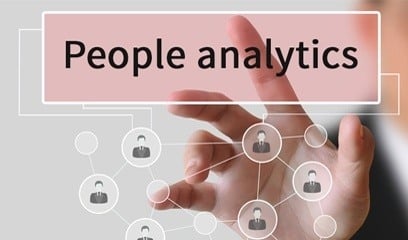
We can become easily confused by discussions about people analytics in the media, blogosphere, and the barrage of marketing content that assails us every day. We are not faulting the people who produce it. We all have our agendas, and our biases rule our thinking, including the words you are reading right this minute.
- Each analytics vendor wants you to believe their software and services are your best solution to people analytics. We would be disappointed if they didn’t, and there are many products and services in the market, which, if used well, can transform your business.
- Human capital management vendors tout their embedded “analytics” as the answer. By themselves, they aren’t. But they certainly are handy tools once you learn how to use them.
- Consultants and niche firms (like ours) produce a lot of content and messaging so you will reach out to them when you need help.
- Media outlets want to sell cornflakes, so they sensationalize everything they touch.
If you read nothing else this summer, we encourage you to dive into the current issue the Journal of Organizational Effectiveness, published by Emerald Publishing. The latest issue contains seven articles that bring clarity to the purpose, methods, and impact of people analytics.
In these seven papers, you will find a thorough discussion on the current state and future of people analytics without the hype and drama. Researchers, practitioners, and business leaders present people analytics in the context of deep research conducted not in the ivory towers of academia, but in some of the largest, most successful companies in the world.
 Explore the Reasons for Analytics
Explore the Reasons for Analytics
Data Minbaeva, Professor at the Department of Strategic Management and Globalization of the Copenhagen Business School, begins by directly addressing the major issue.
If “decent Management Information (i.e. having the facts available) often already generates 80 percent of the value without sophisticated analytics because it allows fact-based diagnostics and decisions,” why do we need analytics?
Minbaeva explains that using data only for reporting places a firm at a significant disadvantage. It may give the company a short-term performance parity but will not create sustained competitive advantage.
Boudreau and Cascio address this in a more specific way, discussing employee turnover. “… leaders presented with analytics that seem to follow a logical model suggesting that reducing turnover is always beneficial may fail to capture pivotal nuances in how employee turnover affects performance.”
Suppose your reports showed you a spike in turnover. The first reaction might be to explore “best practices” to reduce it, but what if the higher attrition was due to an intervention that taught managers how to address poor performance? Does your reporting tool differentiate between desired and undesired turnover? Can you trust the “reason for leaving” data?
Understand How Analytics Can Impact the Business
Jorrit van der Togt of Royal Dutch Shell plc and Thomas Hedegaard Rasmussen of the National Australia Bank collaborated on the perspective of a company with a substantial investment in HR analytics. Royal Dutch Shell has expanded its insights from the traditional talent management domain to business effectiveness and efficiency. Their focus is on people, with the aim of improving business outcomes.
A single blog article is insufficient to explore the many eye-opening concepts in this collection. We invite you to read the journal and watch our blog as we discuss practical applications of the concepts over the next few months. We expect these to be among them:
- Why being right is not enough. Practitioners must be able to communicate the value of the analysis in a way that captures their attention, and it must have a value relevant to the way business leaders make decisions.
- Where does HR analytics belong? Should it be a company-wide team HR analytics team, a separate team in HR, or will it disappear as a separate discipline?
- How does the HR analytics team manage its portfolio of projects?
- Four reasons HR analytics is still in its infancy: maturity, mindset, organization, and competencies and what to do about it.
- What does analytics success mean? How do you know when you have arrived? You don’t know if you are there until you define “there.”
We look forward to the discussions in the coming months. Use the comments section below to tell us where you would like our exploration to go next.
References:
1. Jorrit van der Togt, Thomas Hedegaard Rasmussen, (2017) "Toward evidence-based HR", Journal
of Organizational Effectiveness: People and Performance, Vol. 4 Issue: 2, p.150
3. John Boudreau, Wayne Cascio, (2017) "Human capital analytics: why are we not there?", Journal
of Organizational Effectiveness: People and Performance, Vol. 4 Issue: 2, pp.119-126.
4. Jorrit van der Togt, Thomas Hedegaard Rasmussen, (2017) "Toward evidence-based HR", Journal
of Organizational Effectiveness: People and Performance, Vol. 4 Issue: 2, pp.149-154.
5. Morten Kamp Andersen, (2017) "Human capital analytics: the winding road", Journal of
Organizational Effectiveness: People and Performance, Vol. 4 Issue: 2, pp.155-158.
 PhenomᵉCloud is a comprehensive technology solutions provider committed to empowering businesses to overcome challenges, enhance their workforce capabilities, and achieve superior outcomes.
PhenomᵉCloud is a comprehensive technology solutions provider committed to empowering businesses to overcome challenges, enhance their workforce capabilities, and achieve superior outcomes.

Leave a Comment